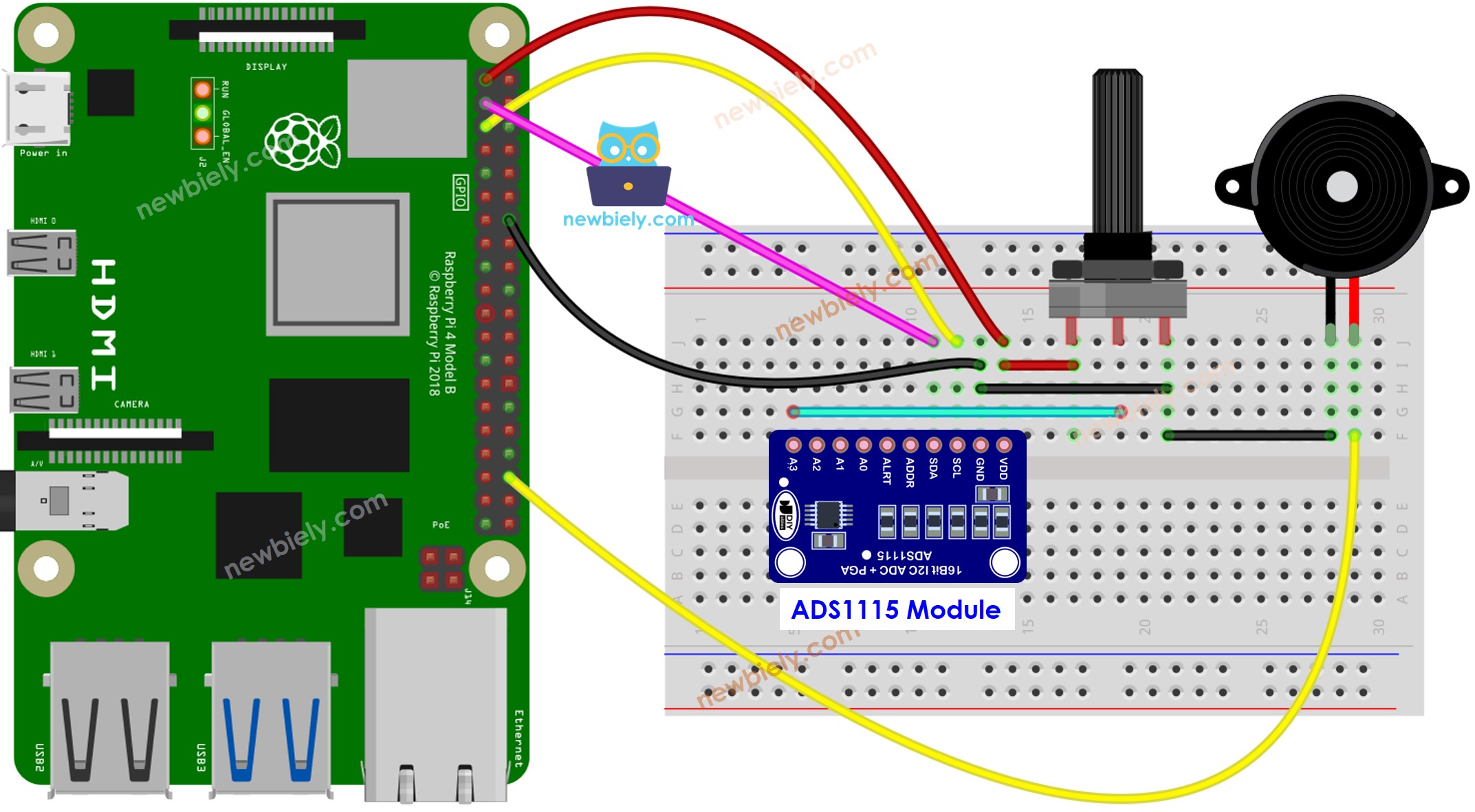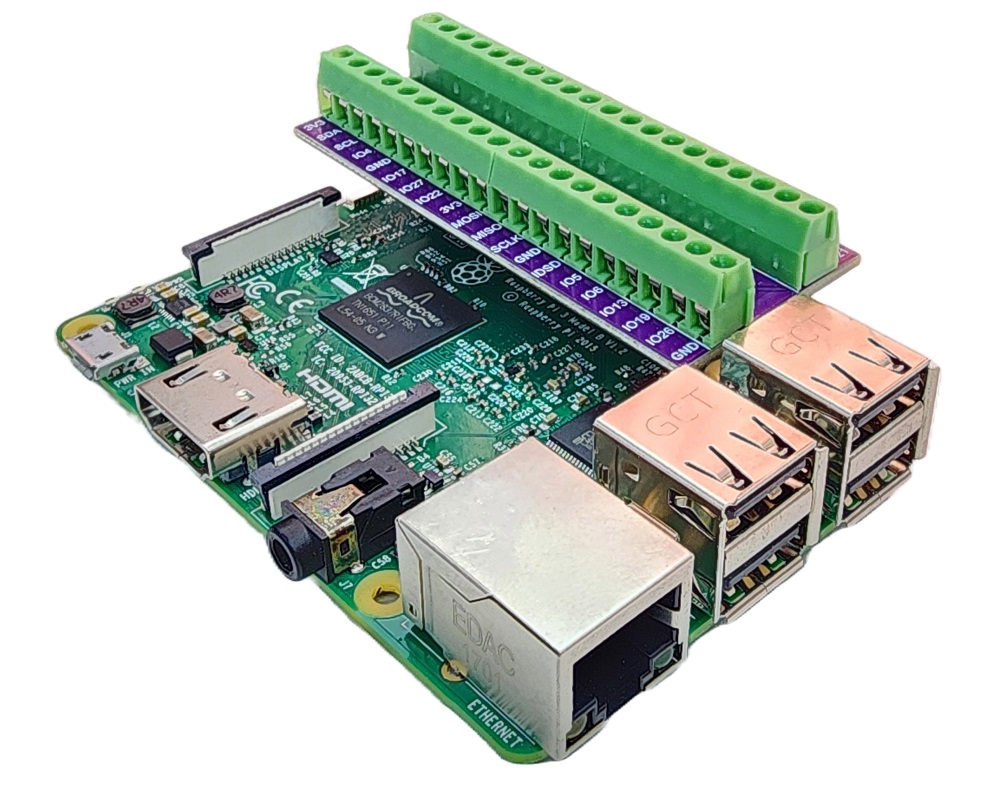Raspberry Pi - Potentiomètre Piézo Buzzer
Ce tutoriel vous explique comment utiliser un Raspberry Pi et un potentiomètre pour contrôler un buzzer piézoélectrique. En détail :
- Le Raspberry Pi détermine si la valeur analogique du potentiomètre est au-dessus ou en dessous d'un seuil et produit un son en conséquence.
- Le Raspberry Pi détermine si la tension de sortie du potentiomètre est au-dessus ou en dessous d'un seuil et produit un son en conséquence.
- Si la tension de sortie du potentiomètre est supérieure à un seuil, le Raspberry Pi peut également jouer une mélodie d'une chanson.
Préparation du matériel
Ou vous pouvez acheter les kits suivants:
| 1 | × | Kit de Capteurs DIYables (30 capteurs/écrans) | |
| 1 | × | Kit de Capteurs DIYables (18 capteurs/écrans) |
À propos du buzzer piézoélectrique et du potentiomètre
Si vous ne connaissez pas le buzzer piézo et le potentiomètre (y compris le brochage, le fonctionnement et la programmation), les tutoriels suivants peuvent vous aider :
Diagramme de câblage

Cette image a été créée avec Fritzing. Cliquez pour agrandir l'image.
Pour simplifier et organiser votre montage de câblage, nous recommandons l'utilisation d'un shield à bornier à vis pour Raspberry Pi. Ce shield assure des connexions plus sûres et mieux gérées, comme illustré ci-dessous :

Code Raspberry Pi - Son Simple
Étapes rapides
- Assurez-vous d'avoir Raspbian ou tout autre système d'exploitation compatible avec Raspberry Pi installé sur votre Pi.
- Assurez-vous que votre Raspberry Pi est connecté au même réseau local que votre PC.
- Assurez-vous que votre Raspberry Pi est connecté à Internet si vous devez installer des bibliothèques.
- Si c'est la première fois que vous utilisez Raspberry Pi, voir Installation du logiciel - Raspberry Pi.
- Connectez votre PC au Raspberry Pi via SSH en utilisant le client SSH intégré sur Linux et macOS ou PuTTY sur Windows. Voir comment connecter votre PC au Raspberry Pi via SSH.
- Assurez-vous que la bibliothèque RPi.GPIO est installée. Sinon, installez-la en utilisant la commande suivante :
- Installez la bibliothèque Adafruit_ADS1x15 en exécutant les commandes suivantes sur le terminal de votre Raspberry Pi :
- Créez un fichier de script Python potentiometer_buzzer.py et ajoutez le code suivant :
- Enregistrez le fichier et exécutez le script Python en tapant la commande suivante dans le terminal :
- Tournez le bouton du potentiomètre.
- Écoutez le son provenant du buzzer piézoélectrique.
Le script s'exécute en boucle infinie jusqu'à ce que vous appuyiez sur Ctrl + C dans le terminal.
Explication du code
Consultez l'explication ligne par ligne contenue dans les commentaires du code source !
Le Raspberry Pi joue la mélodie de la chanson.
Jouons la mélodie de "Jingle Bells" lorsque le potentiomètre atteint une valeur seuil.
Étapes rapides
- Créez un fichier script Python potentiometer_buzzer_song.py et ajoutez le code suivant :
- Enregistrez le fichier et exécutez le script Python en exécutant la commande suivante dans le terminal :
- Tourner le potentiomètre.
- Écouter la chanson du buzzer piézo.
Explication du code
Consultez l'explication ligne par ligne contenue dans les commentaires du code source !
